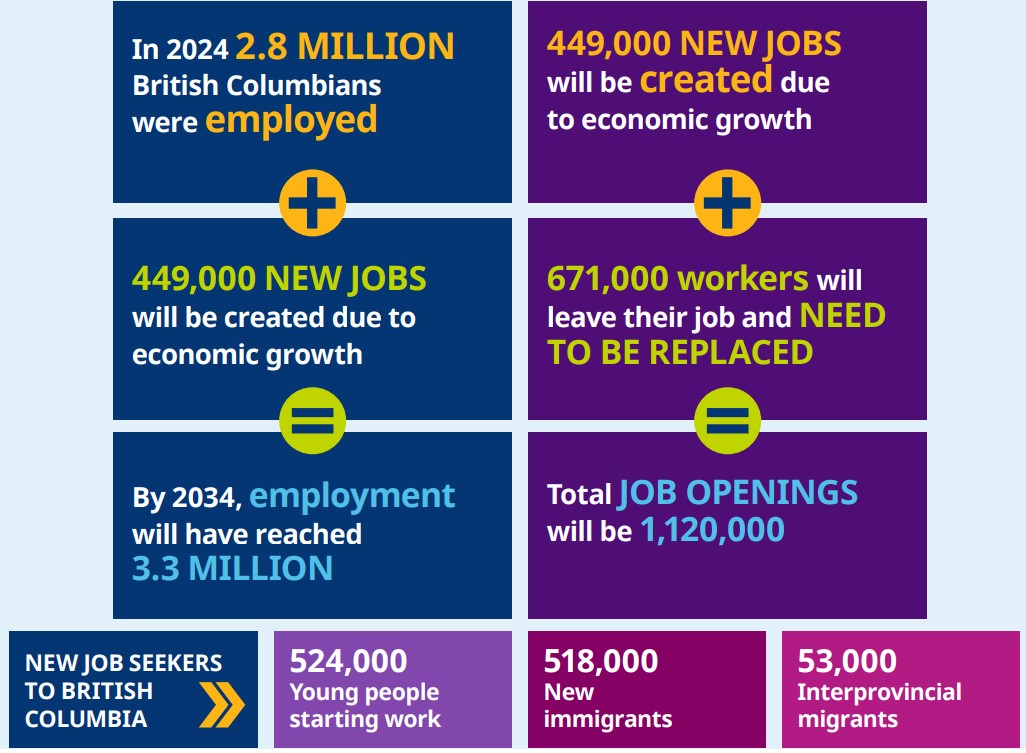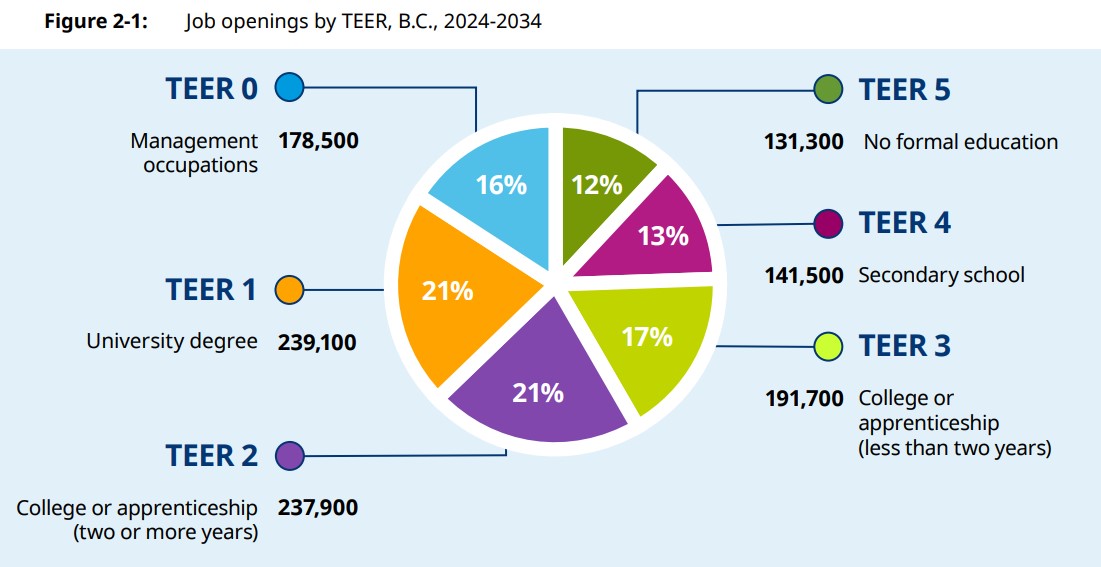
Which industries will see the biggest demands?

British Columbia expects a massive labour shortage in the province over the next decade.
From 2024 to 2034, there will be 1.12 million job openings in the province, according to a report from WorkBC.
That number is 122,000 more job openings than projected in the 2023 edition of the outlook.
Around 104,000 of these additional positions are expected to be expansion jobs—job openings created through economic growth—that will need to be filled in the early years of the forecast period.
(Insert photo: Job openings)
One reason many Canadians are struggling financially these days is the labour shortage that numerous sectors are experiencing, an expert from the Canadian Federation of Independent Business (CFIB) said in a previous CBC report.
The majority (60%) of the expected job openings in B.C. over the next decade will be due to the number of workers retiring, according to WorkBC.

"As B.C.’s population ages over the next decade, we anticipate there will be 671,000 job openings to replace retiring workers," it said in its 2024 Labour Market Outlook (LMO).
Meanwhile, the remaining 40% will be due to the growth in the province’s economy, according to the report.
"Employment in the province is expected to grow at an annual average of 1.4 %, with 3.3 million people being employed in B.C. by 2034," said WorkBC.
Between 2024 and 2034, the following five occupational groups are expected to account for nearly 80% of the projected job openings in B.C., according to the WorkBC report:
"The health care and social assistance industry continues to have the most job openings of any industry over the next decade due to an aging population. The rapid advancement of technology, especially in fields like computer systems design, engineering and consulting services, is driving demand for professional, scientific and technical services," read part of the British Columbia Labour Market Outlook.
"The construction industry continues to benefit from significant investments in infrastructure projects, housing developments and commercial real estate, particularly in urban areas like Metro Vancouver. The provincial government’s focus on affordable housing, transportation infrastructure and green building initiatives will continue to fuel demand in this sector."
B.C. is intensifying its efforts to recruit U.S. healthcare professionals as it faces a growing shortage of doctors and nurses, with hundreds of thousands of residents lacking a family physician and rural emergency rooms experiencing periodic closures, according to a previous report.
The job openings in B.C. are projected to require these educational attainment levels:

However, the B.C. government noted that these numbers were estimated prior to several factors that could impact the job market in the province.
“The 2024 edition uses data collected until April 2024, before changes in the federal immigration targets,” said the provincial government.
“Slower population growth will impact labour supply, the demand for some goods and services, and the demand for workers in certain sectors, all of which have implications for the provincial economy. The 2024 LMO was likewise created prior to the U.S. government’s threats to impose tariffs on Canadian goods.”
More than four in 10 (42%) of Canadians who are currently employed fear losing their job within the next 12 months, according to a previous Leger report. One expert had previously said that the extended implementation of U.S. tariffs could lead to at least 1 million Canadians to lose their jobs.
Meanwhile, Wendy Cocchia, B.C.’s lieutenant-governor, has said that: “As a country, Canada must be prepared to fight back, if necessary, to prevent a trade war.”